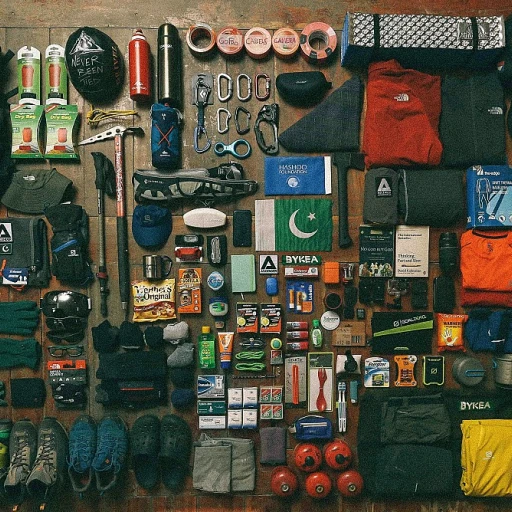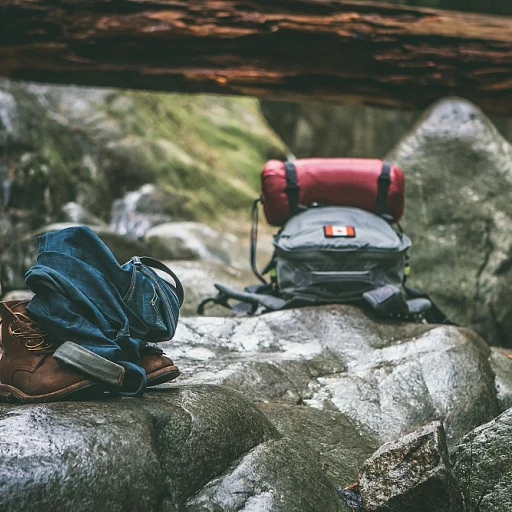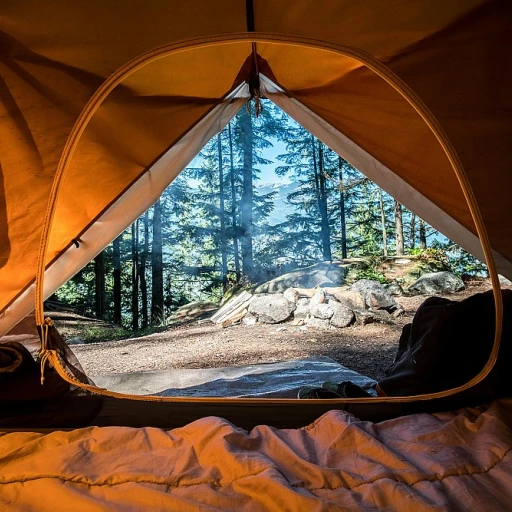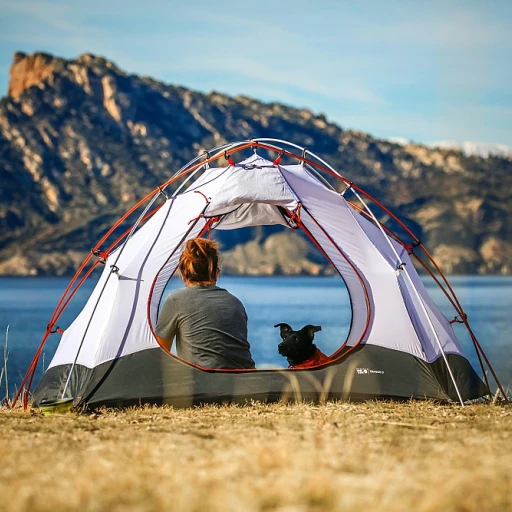
Understanding the Role of Boot Shoe Strings
The Critical Connection: Boot Shoe Strings and Hiking Performance
When it comes to hiking boots, many outdoor enthusiasts and experienced hikers often enhance their hiking experience with boot shoe strings. It's easy to overlook these slender cords, but they play a crucial role in ensuring a safe and comfortable trekking experience. The right pair of laces not only secures your boots but can also significantly impact the overall performance and longevity of your footwear.
Consider the essential functions boot shoe strings serve. They are designed to provide supportive tension, holding your boots in optimal alignment. This stabilization might seem subtle but it can make a difference when tackling uneven terrains, reducing the risk of injuries. Furthermore, proper lacing can help prevent your feet from sliding around inside the boots, which minimizes friction and, thus, blisters.
Another aspect to think about is how these laces can influence the style and adaptability of your boots. Whether opting for black boot laces for a classic look or camo for a more adventurous appearance, the variety available allows hikers to tailor their boots to personal preferences and hiking conditions.
As we delve into other sections, factors such as material, durability, and innovative designs become apparent in uncovering the optimal laces for your boot. These key considerations bridge the gap between simple strings and what could potentially be a pivotal factor in a hiker's comfort and safety on the trail. With options ranging in price from low to high, there's something suitable for every budget.
Materials Matter: Choosing the Best Boot Shoe Strings
Optimal Materials for Boot Shoe Strings
When considering boot shoe strings for your hiking boots, understanding the materials available is key to ensuring that your laces not only complement your style and functionality requirements but also offer the durability needed for various terrains.
There is a wide range of materials to choose from, each offering distinct advantages. Traditional cotton laces provide a classic look, often available in black, brown, white, and even camo styles. They offer a comfortable fit and are commonly found in low-priced boots. However, they may not offer the heavy-duty resistance needed for extensive hiking or pro mountaineering where conditions can be harsh.
Synthetic fibers like polyester and nylon are frequently used for boot laces designed for the great outdoors. These materials are known for their strength and resilience, allowing them to withstand the rigors of both high and low temperatures. Polyester laces, whether waxed to resist water or in vivid colors like red or brown, provide reliable support and quick-drying capabilities. Nylon, on the other hand, offers excellent abrasion resistance, making it a better choice for those who frequently tackle tough terrains.
Kevlar is another excellent material for boot laces. Known for its high strength-to-weight ratio, Kevlar laces can endure significant stress without fraying or breaking. While they might come at a high price point, they are a worthy investment for serious hikers and those wearing work boots where durability is a priority.
Lastly, when selecting boot laces, it is essential to sort the best options based on the specific demands of your activities, whether it's for leisurely hikes or demanding expeditions. The price may be a consideration, with options ranging from price low to high, offering something for every budget. Additionally, consider the inch length needed to ensure proper fit and support, as this can vary depending on your boot design and height from high to low.
Lacing Techniques for Optimal Support
Cinch Up Properly: Lacing Tips for Maximum Performance
Mastering the art of lacing your hiking boots can significantly enhance your hiking experience. The way you lace your boots isn't just about style; it plays a crucial role in providing the necessary support and comfort during your treks. Let's explore some effective lacing techniques.
- Surgeon's Knot: This popular technique offers additional hold and stops the laces from loosening as you hike. Perfect for keeping the boot tight around the ankle, it reduces the risk of blisters by preventing shifting.
- Window Lacing: If you experience pressure across the top of your foot—known as "lace bite"—window lacing is a solution. It creates a gap in the lacing where the pressure is most intense, offering relief and comfort.
- Heel Lock Lacing: To secure the heel in place, preventing it from slipping and causing friction, employ the heel lock technique. It ensures the whole foot remains snug, offering better stability on rugged terrains.
- Double Back Lacing: Ideal for pro hikers who want to customize the boot's tightness at different sections. This method allows for adjustments between the lower and upper sections of the boot for tailored support.
While technique is vital, ensuring your boot laces are made from durable materials, such as waxed for heavy-duty use or camo for better durability, will keep them effective mission after mission. Optimal insole support can further improve the fit, reducing the potential for discomfort during prolonged use. Investing the time to perfect your lacing technique and choosing the right type for your boot style will lead to more satisfying outdoor adventures.
Durability and Maintenance of Boot Shoe Strings
Longevity and Care: Ensuring Your Boot Laces Go the Distance
Walking trails and rugged terrains put a lot of stress on your hiking boots, but often, it's the boot laces that face the brunt of wear and tear. It's essential to choose laces that are robust and easy to maintain. Here's a closer look:- Material's Impact on Lifespan: Opt for waxed laces, as they are generally more durable compared to their unwaxed counterparts. Waxed laces tend to fend off dirt and moisture more effectively, prolonging their life. For those who adventure through diverse terrains, heavy duty laces can be worthwhile.
- Regular Inspection: Before hitting the trails, always inspect your boot laces for any signs of fraying or damage. Pay attention to the tension along the lace, particularly if you frequently adjust the tightness of your hiking boots using high low techniques.
- Efficient Clean-Up: Washing the laces by hand using warm, soapy water can help remove accumulated dirt, ensuring they stay flexible and robust. Avoid harsh chemicals which may degrade the lace's fibers quicker.
- Storage Tips: Store your boots in a cool, dry place. This prevents your laces from exposure to moisture and high temperatures, which might degrade them over time. Inflated or undersized boot laces may not perform efficiently, risking safety.
- Economic Consideration: While considering the price can be significant when selecting laces, it's important to strike a balance between cost and quality. A set of waxed laces could initially have a high price, but may offer better long-term value.
Common Problems and Solutions
Common Issues with Boot Laces
Even the most experienced hikers encounter problems with their boot laces. Whether it's the laces coming undone or fraying too soon, these issues can disrupt your hiking experience. Understanding these common problems can help you find effective solutions and ensure your hiking boots remain reliable.
Frequent Problems and Their Fixes
- Laces Coming Undone: This is a common issue, especially with low-quality laces. Opt for heavy-duty, waxed laces designed to stay tied longer. The wax coating provides extra grip, reducing the chances of your laces untying during a hike.
- Fraying and Wear: Laces made from inferior materials tend to fray quickly. Choosing laces made from durable materials, such as nylon or polyester, can extend their lifespan. Additionally, check the lace tips, as reinforced aglets can prevent fraying.
- Incompatibility with Boot Eyelets: Sometimes, laces are too thick or too thin for the boot eyelets. Ensure your laces are the right diameter to fit snugly through the eyelets without causing wear or tear.
- Incorrect Length: Laces that are too short or too long can be problematic. Measure your old laces or consult your boot's specifications to find the right inch length. This ensures a proper fit and optimal support.
Choosing the Right Style and Color
While functionality is key, style also plays a role in choosing boot laces. Whether you prefer classic black boot laces, camo patterns, or vibrant red, the right color can complement your hiking boots and personal style. Additionally, consider the lace style that best suits your hiking needs, whether it's quick-lacing systems or traditional tie laces.
Maintaining Your Laces
Regular maintenance can significantly extend the life of your boot laces. Clean them periodically to remove dirt and debris, and inspect them for signs of wear. If you notice any damage, replace them promptly to avoid issues on the trail. Investing in high-quality laces might come with a higher price, but the durability and performance are worth it.


![Round Shoelaces [2 Pairs] Heavy Duty Boot Shoe Laces for Hiking Work Boots 55Inch(140CM) Dots Coffee Khaki](https://www.hiking-boots.net/storage/464565/conversions/81msMn-3oGL._AC_SL1500_-medium.webp)
![Round Boot Laces [1 Pair] Heavy Duty and Durable Shoelaces for Boots, Work Boots & Hiking Shoes 54 inches (137 cm) Black/Brown](https://www.hiking-boots.net/storage/464574/conversions/91UXBZHz-7L._AC_SL1500_-medium.webp)













